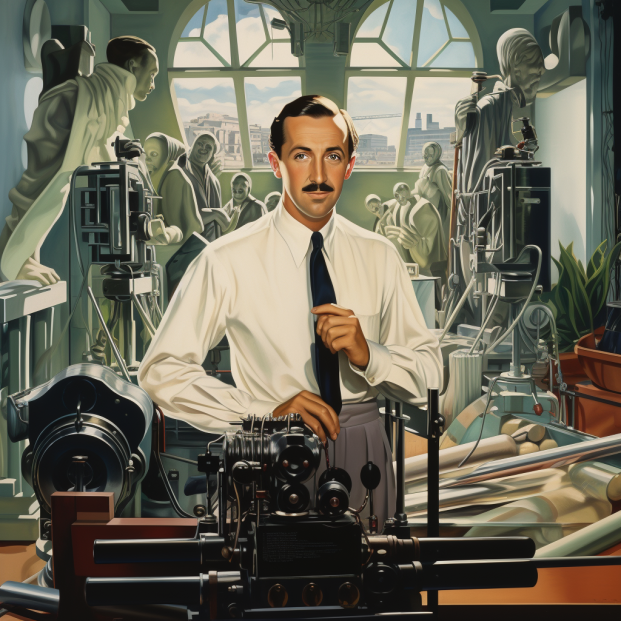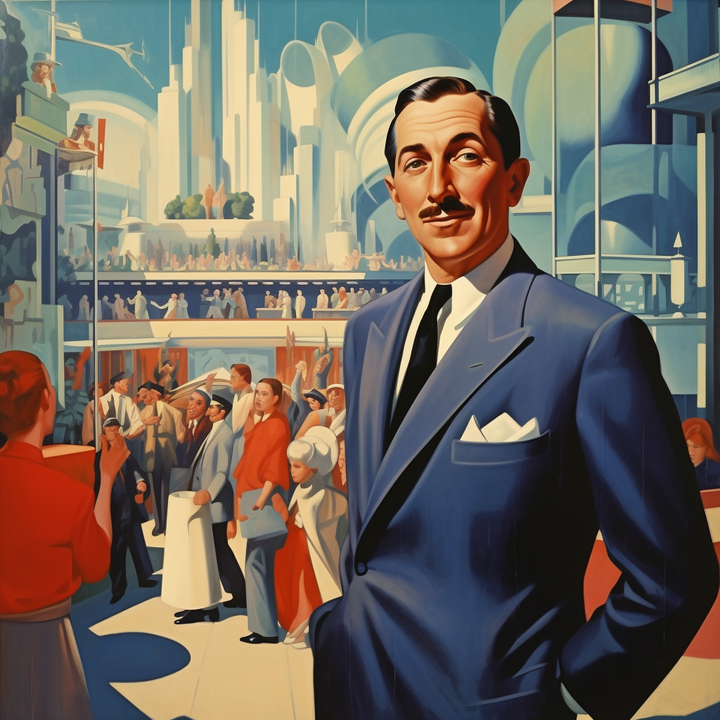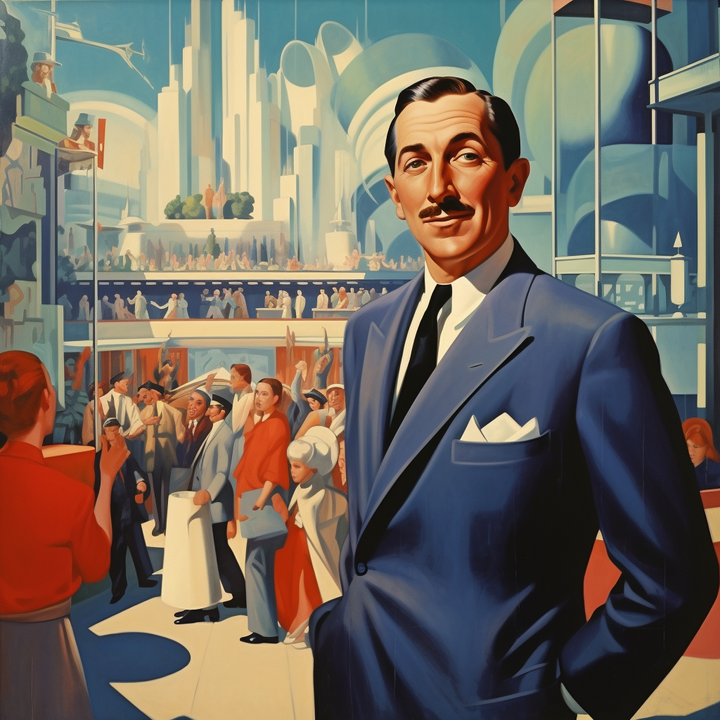Walt Disney and the Camera Multiplane

In a blend of art and technology, The Walt Disney Company once again positioned itself at the forefront of animation with the invention of Disney's multiplane camera, also known as the famous multiplane camera.
This groundbreaking tool brought a new dimension of depth and realism to animation, marking a significant leap in the art of storytelling.
This story is a celebration of how technological innovation can elevate artistry, transforming the way stories are told and experienced.
Factual Details of the Famous Multiplane Camera
Era: 1930s Location: The Walt Disney Studios, California, USA Innovation: Multiplane Camera
In the 1930s, The Walt Disney Company developed the first multiplane camera at Walt Disney Animation Studios, an apparatus that changed the animation landscape. Prior to its invention, animated scenes lacked depth, appearing flat and two-dimensional.
The multiplane camera utilized multiple layers of animation artwork placed at various distances from the camera lens, creating a sense of depth and realism previously unachievable through the traditional animation process.
This technology was first prominently used in the 1937 full-length animated film “Snow White and the Seven Dwarfs,” and its success set a new standard in animated films. Disney films like Pinocchio and Fantasia also benefited from this innovation.
The multiplane camera was used to create some of the most famous multiplane camera effects, adding depth and texture to Disney classics.
Key Outcomes:
- The multiplane camera enabled more sophisticated and visually captivating animations.
- It significantly enhanced the viewer’s experience, adding a sense of realism to animated films.
- This innovation solidified Disney’s reputation as a leader in technological advancements in animation.
The transition to digital multiplane cameras in the CAPS process for subsequent Disney films continued this legacy of innovation.
Leadership Lessons from the Invention of the Multiplane Camera at Walt Disney Animation Studios
1. Pushing Artistic Boundaries through Technology:
- The development of the multiplane camera illustrates how technology can be harnessed to push the boundaries of art and storytelling, encouraging leaders to seek innovative methods to enhance their creative outputs.
2. Enhancing Audience Experience:
- Disney’s focus on audience experience led to this technological advancement, underscoring the importance of understanding and prioritizing the needs and expectations of your audience or customers.
3. Fostering a Culture of Innovation:
- The creation of the multiplane camera was a result of a culture that valued and encouraged innovation. Leaders should strive to cultivate environments where creativity and experimentation are fostered. The Walt Disney Family Museum showcases the history and significance of this innovation, preserving the legacy of the multiplane camera.
4. Visionary Investment:
- Investing in the development of the multiplane camera was a visionary move, showcasing the importance of foresight and investment in long-term benefits over immediate gains.
5. Setting Industry Standards:
- This innovation helped set new standards in the animation industry, demonstrating how technological advancements can elevate an entire industry’s capabilities. The
Concluding Thoughts
The invention of the multiplane camera by The Walt Disney Company is a testament to how technological innovations can revolutionize an art form. It highlights the symbiotic relationship between technology and creativity and how their intersection can lead to groundbreaking advancements. This story serves as an inspiration for leaders in all fields to explore how embracing and investing in technology can enhance their work, redefine their industry, and create a lasting impact. One of the original Disney Multiplane cameras can be found at The Walt Disney Family Museum in San Francisco.
Your Reflection
Reflecting on the impact of the multiplane camera, consider:
- How can you integrate new technologies into your work to enhance creativity and production?
- In what ways can you foster a culture of innovation within your organization that encourages experimentation and creative problem-solving?
- How can your investments in technology not only benefit your immediate projects but also contribute to advancing your industry as a whole?



